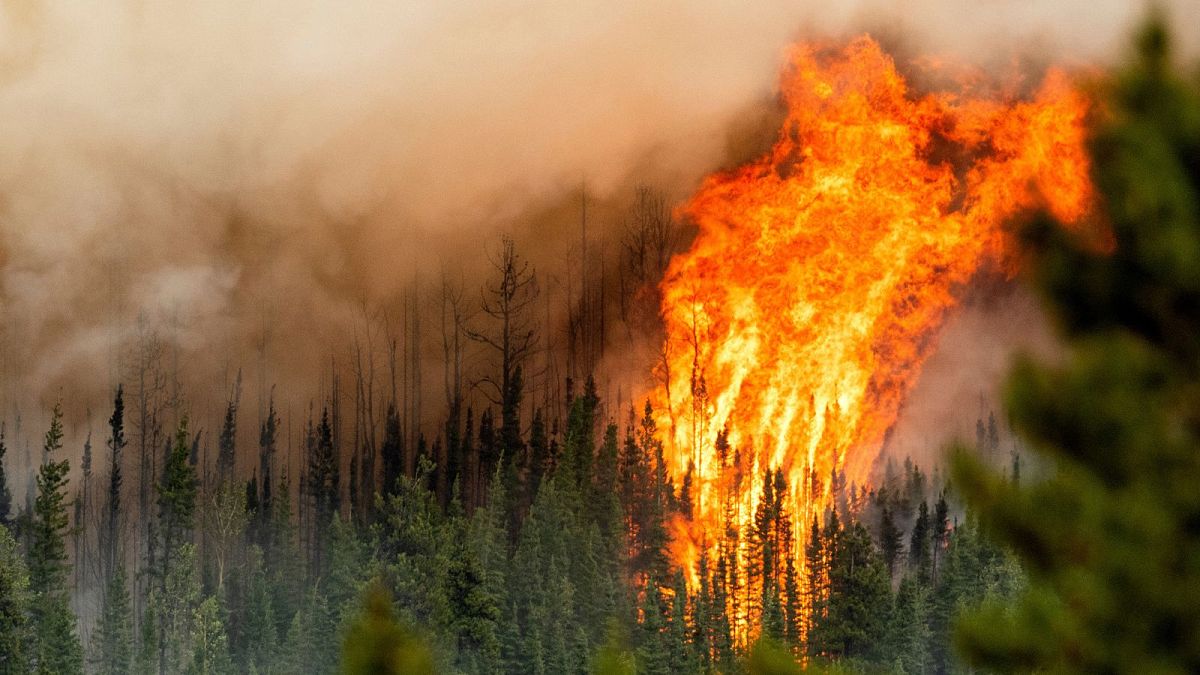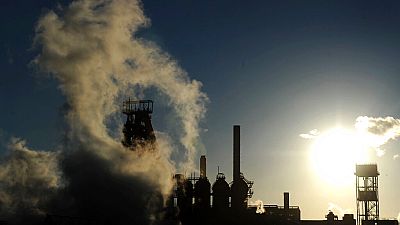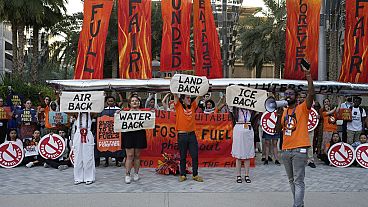Canadian wildfires contributed to a record high for fossil fuel emissions in 2023, the new report finds.
We have just seven years of carbon budget left before the world shoots past 1.5°C, according to a major new report.
The annual Global Carbon Budget cuts through what Greta Thunberg calls the ‘blah blah blah’ of COPs. In essence, it gives a sobering glimpse at what humans can still do with fossil fuels and not trigger runaway climate change.
Global carbon emissions from oil, gas and coal have risen again this year - up by 1.1 per cent on 2022 levels to reach an estimated 36.8 billion tonnes.
If pollution continues on this track, scientists in the Global Carbon Project team estimate a 50 per cent chance that global heating will exceed 1.5°C consistently in about seven years.
“The impacts of climate change are evident all around us, but action to reduce carbon emissions from fossil fuels remains painfully slow,” says Professor Pierre Friedlingstein, a former IPCC lead author, who led the study.
“It now looks inevitable we will overshoot the 1.5°C target of the Paris Agreement, and leaders meeting at COP28 will have to agree to rapid cuts in fossil fuel emissions even to keep the 2°C target alive,” adds the professor, who works at Exeter’s Global Systems Institute.
What happens to the carbon the world produces?
When accounting for land-use change as well as fossil fuel use, total global CO2 emissions are estimated to be 40.9 billion tonnes in 2023.
Although emissions from deforestation, for example, are set to dip slightly, they’re still too high to be offset by the current rate of replanting new forests.
2023’s carbon story fit into a wider, concerning trend: a 10-year ‘plateau’ in emissions which scientists say is far from the steep reduction urgently needed to meet climate targets.
But for those on the frontlines of climate change, it’s been 12 months of distinct crises - a warning of what’s to come as we approach the 1.5°C threshold. Global CO2 emissions from fires this year have been larger than average, partly due to an extreme wildfire season in Canada.
Roughly half of all CO2 emitted continues to be absorbed by land and ocean ‘sinks’, with the rest remaining in the atmosphere where it causes climate change.
These natural sinks are by far our most effective tool at dealing with released emissions. Technology-based carbon dioxide removal like CCS still only amounts to about 0.01 million tonnes of CO2, the report notes.
That’s more than a million times smaller than current fossil CO2 emissions.
Where is releasing the most carbon?
Produced by an international team of more than 120 scientists, the 2023 Global Carbon Budget report paints a mixed picture of pollution around the world.
It shows that fossil CO2 emissions are falling in some regions, including Europe, but rising overall.
This year, emissions are projected to increase in India (8.2 per cent) and China (4 per cent), and decline in the EU (-7.4 per cent) and the US (-3 per cent).
Europe’s progress is largely thanks to a fall in the consumption of coal and fossil gas. The authors attribute this to an increase in renewables capacity plus the continued effects of the energy crisis, with high energy prices and other inflationary factors leading to lower energy demand.
Fossil CO2 emissions in India are now above those of the EU, as coal, oil, gas and cement emissions in the South Asian country all rose this year. From an industry point of view, the report also notes that emissions from international aviation and shipping are projected to increase by 11.9 per cent in 2023.
“The latest CO2 data shows that current efforts are not profound or widespread enough to put global emissions on a downward trajectory towards net zero, but some trends in emissions are beginning to budge, showing climate policies can be effective,” Professor Corinne Le Quéré, Royal Society Research Professor at UEA’s School of Environmental Sciences comments.
“Global emissions at today’s level are rapidly increasing the CO2 concentration in our atmosphere, causing additional climate change and increasingly serious and growing impacts.”
The message for leaders at COP28 is clear: “All countries need to decarbonise their economies faster than they are at present to avoid the worst impacts of climate change,” she adds.



